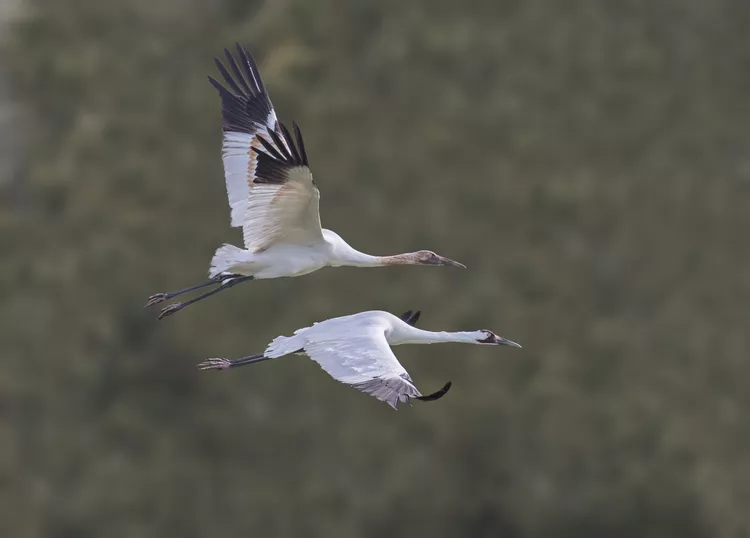Viewing Whooping Cranes in Texas: A Guide
A Look at the Whooping Crane
The Texas Coastal Bend has long been a region that whooping cranes migrated to for the winter. This Coastal Bend includes the deep curved area located along the Gulf. One of its largest cities is Corpus Christi, and other notable areas include Laguna Madre, North Padre Island, and Mustang Island. In recent years, a record number of whooping cranes have touched down along the Texas coast, according to the U.S. Fish and Wildlife Service.
Whooping cranes are the tallest birds in North America, characterized by their striking white plumage, crimson caps, and long, dark, pointed bills. These majestic birds are often mistakenly identified as other large white birds, such as pelicans and wood storks. However, they can be distinguished by their black wing tips comprising about 10 feathers. As an endangered species, the whooping crane population is critically low, with around only 153 pairs living in captivity today. Unfortunately, their decline has been attributed to habitat loss and over-hunting.
The two primary migration patterns for these cranes include the Aransas National Wildlife Refuge in Texas and the breeding grounds at Wood Buffalo National Park in Canada. As they migrate, whooping cranes favor wetlands, river bottoms, and agricultural lands. Additionally, they face threats from predators such as black bears, wolverines, gray wolves, red foxes, and ravens.
Options for Bird Watchers
Serious and casual bird watchers alike have several fantastic options for observing these magnificent creatures. According to the U.S. Fish and Wildlife Service, the whooping cranes’ winter range spans approximately 35 miles of the Texas coast. Within this region, do-it-yourself birders will find the Aransas National Wildlife Refuge and the Matagorda Island National WMA/State Park.
The Aransas National Wildlife Refuge encompasses a protected area of 114,657 acres, located on the southwest side of San Antonio Bay. Established in 1937, this American wildlife conservation effort is dedicated to helping migratory birds and other wildlife, thus protecting crucial habitats. Conversely, the Matagorda Island National WMA/State Park is slightly smaller at 56,688 acres, featuring an offshore barrier island and bayside marshes. This island stretches 38 miles long and supports migratory birds and 19 species listed as state or federally endangered.
While Aransas NWR is generally the better choice for birdwatching, some cranes do occasionally migrate to Matagorda Island WMA. Moreover, Aransas NWR offers easier access by car, whereas Matagorda Island WMA can only be accessed via boat, either through private or state-operated ferries.
Go With a Guide
For those interested in a guided experience, the Rockport area features several private tour boat operations. Rockport is a picturesque city on the Texas coast, known for its beautiful beaches, fishing piers, and diverse birdlife. Whether you choose to explore on your own or join a tour group, it is essential to maintain a respectful distance from these endangered birds to avoid causing them distress or disrupting their habitat.




